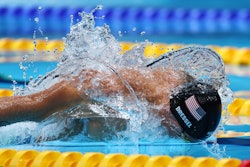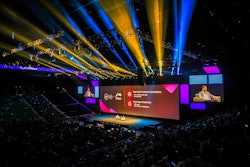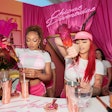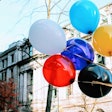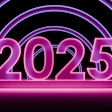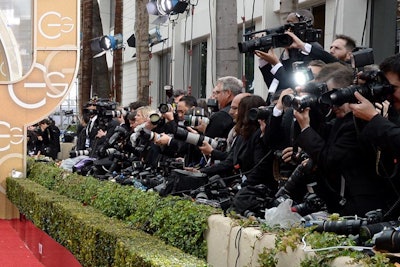
Planners and photographers share a goal: After an event, they want to have an attractive, high-quality, and comprehensive set of images. But sometimes event and meeting organizers make aesthetic and logistical choices that serve a live event space at the expense of photography. To help avoid potential conflicts, photographers offered feedback on choices that can make their jobs more difficult and hinder their shots.
1. Arrivals issues
At red carpet events, most of the photography that ends up in the media happens on the arrivals line, so the step-and-repeat area should adhere to certain best practices. “As a photographer, you never want lights at the bottom of a step-and-repeat,” says BFA co-founder and photographer David Prutting. “That’s annoying and hurts the full-length shots—not to mention, people trip on them.” He also says that vinyl backdrops look bad when they reflect light from camera flashes and suggests avoiding them in favor of a matte-finish fabric, board, hedging, or other backdrop. Prutting also advises that lighting shouldn’t be so intense that guests squint in images. And in his opinion, all step-and-repeats should be wider than eight feet. “Nothing worse than a group shot where the group can't fit within the backdrop."
2. Lighting that looks bad on camera
“Red and blue are both colors that digital doesn't respond well to,” says Tony Brown of Imijination Photography—who allows that these colors may not be avoidable if, for instance, they’re the company hues, or it’s an Independence Day event. Additionally, he urges event pros to avoid doing a color wash on food stations if they want to get appetizing catering shots.
Elizabeth Renfrow of Ra-haus Fotografie characterizes colored lighting as "almost impossible to retouch. If you are going to use colored lights, use them as a highlight, but stick to white light or candlelight” for the venue’s main lighting, she suggests.
3. A dark room
Renfrow also says that bringing lighting levels up overall can improve shots. “If you want something moody, don't make it so dark that you can barely see. I like to use the available light to keep the mood of the scene rather than use a flash that flattens everything out and instantly gives an entirely different feel,” she says. “Mood is absolutely beautiful but we need enough light to capture people's faces. So if you want to be moody and magical, do [stringer] lights or paper lanterns, and make sure to have candles to fill in darker areas closer to people's faces.”
4. A cluttered space
Brown says that extraneous details—even ones that may look great in person—can read as sloppy in event photos. “Generally, confetti on tables never ends up looking good,” he says. “Most of the time it makes things look messy.”
5. Not enough time to shoot
Photographers are likelier to shoot their best work when they have a bit of time to capture images. “One of the smartest caterers I've worked for who wanted room shots told her staff everything had to be ready by 6:30 when in fact the event started at 7 p.m. Thirty glorious minutes of uninterrupted room and detail shots,” he says. “A little down time before the event for [staff] and a free room for photographers [is a win-win].”
Keith Sirchio agrees. “Occasionally photographers are only given a really short window to cover all of the details of a big event before press gets the boot,” he says. “You're told everything is in place, but you have to make your way around quickly. Just when you think you have it covered, they flick the switch on the final lighting design with only minutes to spare and you realize everything you just shot is useless as the environment looks completely different. With only minutes to spare, you have to double back and reshoot.”
6. Redundant photographers
To get shots swiftly and without extraneous people in the frame, Wire Images and Getty Images photographer George Pimentel says he finds it helpful to be the only person designated to the role. He says it can be problematic “when you are at an event and you are hired as the house photographer, but there are other photographers assigned to get coverage of the event as well. You line up a photo opportunity and the other photographers are shooting over your shoulder."
7. Smoke and fog machines
Diffuse fog or smoke can simply kill still photos, Renfrow says. “Unless the smoke sticks to the ground areas, you end up getting photos that feel like you have serious cataracts. The camera can't penetrate the smoke and it's just milky white filters on everything.”




